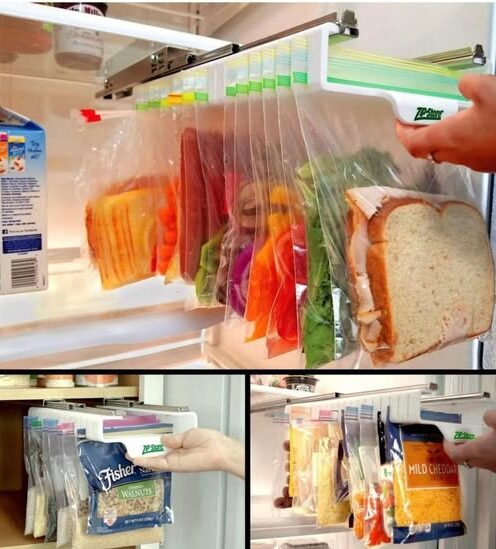Introduction
A well-organized fridge helps reduce food waste, keeps ingredients fresher longer, and makes meal prep a breeze. With a few clever strategies, you can transform a cluttered refrigerator into an efficient, easy-to-navigate space that works for your household—not against it.
Origin
Refrigerator organization methods evolved as homes became more convenience-focused, especially in the mid-20th century. As kitchens grew central to family life, people developed practical systems—containers, grouping, labels—to ensure better food safety and easier access.
Cultural Significance
Today, organized refrigerators symbolize not just order but healthier living. Many cultures value efficient kitchen practices, mindful storage, and minimizing waste. Good organization supports sustainability, saving time, money, and energy while encouraging thoughtful consumption.
Materials Needed & Quantities
Quantities vary depending on fridge size.
- Clear storage bins (4–10)
- Lazy Susan turntable (1–2)
- Egg organizer (1)
- Stackable containers (varies)
- Labels & marker
- Soda can dispenser (optional)
- Airtight containers (varies)
- Fridge liners (optional)
- Zip pouches (optional)
- Shelf risers (optional)
Optional Additions
- Odor absorbers (baking soda, charcoal)
- Color-coded bins
- Glass jars for visibility
- Magnetic clips for notes/lists
- Drawer dividers
- Reusable meal-prep containers
Tips for Success
- Group foods by category for easy access.
- Keep raw meat on the bottom shelf to prevent drips.
- Use airtight containers for produce longevity.
- Label leftovers with dates.
- Don’t overfill shelves—air circulation keeps food fresh.
- Wipe spills immediately to prevent odor.
Instructions — 15+ Genius Ways to Organize Your Fridge
1) Use Clear Bins
Separate categories: snacks, condiments, dairy, produce.
2) Add a Lazy Susan
Perfect for jars and condiments—spin to access quickly.
3) Store Meat on the Bottom Shelf
Prevents contamination from drips.
4) Create a “Use ASAP” Box
Reduces waste by highlighting foods that need to be eaten soon.
5) Keep Milk & Dairy on Middle Shelves
Colder, consistent temps preserve freshness.
6) Use Fridge Liners
Catch spills, make cleanup easy.
7) Label Everything
Dates & categories keep you organized and safe.
8) Store Veggies in Breathable Bags
Keeps produce crisp longer.
9) Put Drinks in Dispensers
Maximizes vertical space, easy grab-and-go.
10) Keep Condiments in the Door
Least temperature-sensitive items go here.
11) Transfer Bulk Items to Stackable Containers
Saves space and improves visibility.
12) Separate Fruit & Veg
Different humidity settings help them last longer.
13) Make a Kid Zone
Snack bin for easy access.
14) Use Shelf Risers
Add space vertically where needed.
15) Organize by Zones
Dairy, deli, leftovers, produce—keep similar items together.
16) Store Herbs in Water
Like flowers—keeps them fresh much longer.
17) Freeze Extra Food in Portion Packs
Reduce waste and save time.
Description
These strategies make your fridge more functional, visually appealing, and increasingly sustainable. By categorizing items and maximizing space, you can find ingredients quickly, maintain food freshness, and reduce spoilage.
Nutritional Information
(Not food-specific)
However, an organized fridge:
- Encourages healthier meal choices
- Prevents fresh produce from being forgotten
- Supports food safety through proper placement
Conclusion
Thoughtful fridge organization boosts efficiency, prevents food waste, and frees mental space. With a few smart tools and habits, your fridge becomes a streamlined hub for daily cooking and nourishment.
Recommendation
Start with simple changes—clear bins, labeling, and zoning. Over time, add lazy Susans, risers, or specialty bins as needed. Consistency is key!
Embracing Healthful Indulgence
Keeping a tidy fridge doesn’t just look nice—it supports mindful eating and reduces stress. When your ingredients are visible and accessible, nutritious choices feel easier and more enjoyable. This organization becomes a small act of self-care that nourishes both body and mind.
